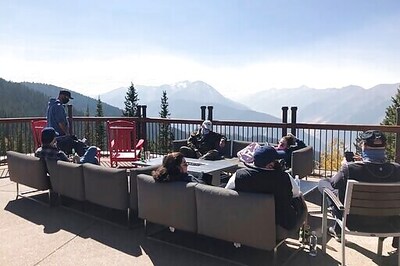
views
Padang, Indonesia: Two-years after an earthquake off western Indonesia unleashed a monster tsunami, scientists expect the same fault to rupture again within the next few decades—and this town stands to take the full force of the waves.
They predict a large swath of Sumatra island's densely populated coast just south of the tsunami-hit area will be pounded by a giant wall of water.
"All this area in red will disappear," Padang Mayor Fauzi Bahar said, pointing at a satellite map on his office wall showing the likely reach of the waves into the town.
The low-lying town of 900,000 people has started mapping out evacuation routes and educating the public, but all the same, authorities fear up to 60,000 will die, unable to outrun the waves even if they get a speedy warning and flee. "The people will be washed away," Bahar said.
On the morning of December 26, 2004, the most powerful earthquake in four decades lifted the seabed west of Sumatra by several yards, propelling waves up to two stories high at jetliner speeds across the Indian Ocean to smash into coastal communities, beach resorts and towns in 12 nations.
In hardest-hit Indonesia, Thailand, Sri Lanka and India, the waves surged miles inland, tossing ships, swallowing entire villages and leaving behind a blasted landscape of concrete foundations and rubble littered with tens of thousands of bodies.
On Sumatra Island—home to more than half the tsunami's left nearly 230,000 dead and missing—volunteers and emergency workers took three months to recover all the corpses and bury them in mass graves.
Warnings of another tsunami-spawning quake are adding urgency to efforts to establish a warning system covering the Indian Ocean rim like the network of high-tech buoys in the Pacific that alerts Japan, the United States and other nations of sudden tidal changes.
The worst-affected countries have begun installing sirens on threatened coasts and three buoys with sensors capable of detecting waves generated by seismic activity are in the water, but the network is several years from completion, officials say.
Making sure the system works from end-to-end is a "daunting task," said Curt Barrett at the US National Oceanic and Atmospheric Administration, which is helping set it up.
"Once the warning goes out, people have to know what to do," he said. "All of this information is useless if it doesn't get to the person down on the beach."
The warnings of another tsunami are based on more than a decade of research by respected US geologist Kerry Sieh and a team of scientists on a section of the fault just south of the part that ruptured in 2004.
His conclusions are shared by scientists at other universities and government research institutions.
PAGE_BREAK
230-year pattern
The fault, which runs the length of the west coast of Sumatra about 125 miles offshore, is the meeting point of the Eurasian and Pacific tectonic plates that have been pushing against each other for millions of years, causing huge stresses to build up.
Using historical accounts of earlier quakes, measurements of coral uplift and data from a network of Global Positioning System transmitters on nearby islands, Sieh, from the California Institute of Technology, has found a pattern of large earthquakes about every 230 years, with the last major ones in 1797 and in 1833.
The 2004 jolt, as well as another strong quake on the same fault three months later that killed 1,000 people on nearby Nias island, has loaded even more stress, Sieh said.
"We are not saying the quake is going to happen tomorrow or next week, but on the other hand we don't want people to forget about it and be lax," he said. "I'd be surprised if it were delayed much beyond 30 years."
A small non-governmental agency funded by foreign donors is spreading the message in Padang and surrounding districts. The group has met with hundreds of village heads and religious leaders and sends volunteers to schools along the threatened coast with a simple warning:
"If the quake lasts longer than a minute, knocks you to your feet or collapses buildings, run to the nearest hills," volunteer Riska told a class recently.
"If you can't make it, then climb a tree. Start learning now," she said, her voice hoarse from trying to hold the giggling children's attention.
The group says residents and local government officials are receptive to its message, especially since a second tsunami on Indonesia's main island of Java last July killed 600 people.
Coastal residents say land prices have fallen, a sign that people are moving inland.
But simply raising awareness isn't enough, experts say.
The tsunami will likely crash into the shore within 20 minutes because the fault line is so close, meaning the town must make expensive infrastructure changes to enable people to flee.
Evacuation roads need widening, and bridges crossing the town's many rivers need reinforcement. Some experts say tsunami-proof towers should be built in coastal areas and emergency services and government agencies moved inland.
Sieh says Indonesia would be better off spending more money on those projects and educating people than on installing and maintaining an expensive warning system of buoys.
"You have an earthquake and it lasts for five minutes. It is shaking so heavily you can't walk. Why do you need a warning? Haven't you got one already?" he asks. "It is not just a waste of money, it is a distraction: It gives people a false sense of security."
Australian Chris Scurrah and his wife manage a small hotel in Padang's seaside colonial quarter and run a thriving business organizing surfing trips. After five good years, they have no plans to leave.
"It's an awesome place to be, but it's just scary it's going to get smashed," Scurrah said before setting out with a boatload of surfers. "That's just the way it works here."




















Comments
0 comment